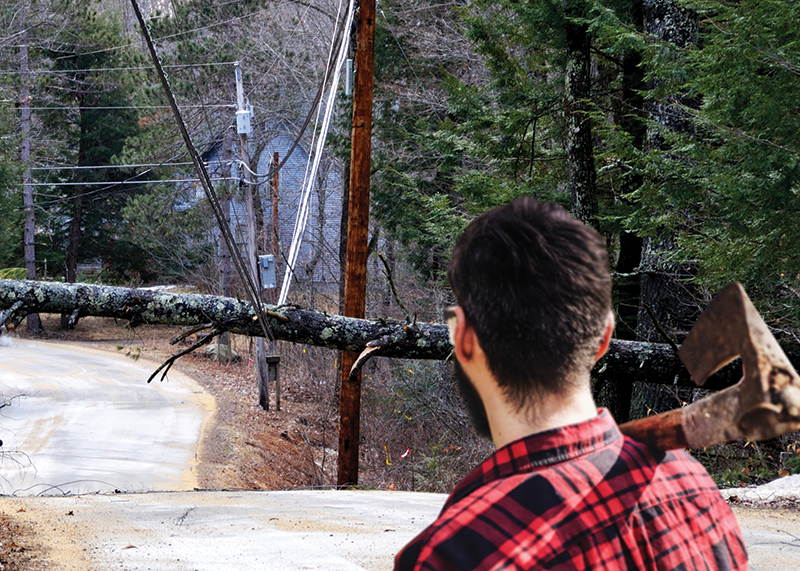
“The tree service wants how much? Forget it. I’ve got a chain saw and the tree’s not that thick. It shouldn’t be tough to bring it down.”
An hour later, 130 homes are without power, and our amateur lumberjack is facing a hefty repair charge. Actually, he’s lucky to be alive. When the tree kicked back, it missed his chest by inches and dropped a live power line not five feet away.
Trees add beauty to our homes, shade for outdoor living, and oxygen for everyone to breathe. As they grow, branches may begin to rub up against our homes or stretch into places where we don’t want them. That’s why many homeowners like to keep their trees pruned. Sometimes, you need to remove a tree because it’s diseased or just in an inconvenient place.
Cutting a tree looks fairly easy. You decide where you want it to fall and make a cut so it drops in that direction. Experienced arborists will tell you that it’s rarely that easy or predictable. Different types of trees behave differently when being cut, and if your tree’s trunk splits or twists while you’re sawing through it, what looked like a simple task just became dangerous. The danger multiplies if the tree is anywhere near live power lines or other electrical equipment such as yard transformers. Falling trees and branches can pull live power lines down to the grass, creating an electrocution hazard (especially if the grass is damp).
Paying for a professional is money well spent. Arborists know how to cut trees safely and efficiently, while keeping them away from power lines. Plus, letting them do the work keeps you out of harm’s way. One more thing: Never go near a downed power line. If you see one, call the REMC right away.



